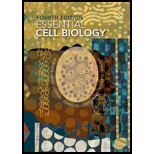
A.
To find: How many carbon atoms are there in the book.
Concept introduction:
Polysaccharides are
B.
To find: How many carbon atoms in cellulose would be stacked on top of each other to span the thickness of the page.
Concept introduction:
Polysaccharides are polymeric carbohydrate molecules that are composed of long chains of monosaccharide subunits linked together by glyosidic linkages. These polysaccharides, upon hydrolysis, dissociate into respective monosaccharides or oligosaccharides. Cellulose is a type of polysaccharide that is an abundant organic polymer on earth. It is made up of D-glucose monomeric subunits linked together by β (1→4) bonds.
C.
To determine: How many carbon atoms of
Concept introduction:
Polysaccharides are polymeric carbohydrate molecules that are composed of long chains of monosaccharide subunits linked together by glycosidic linkages. These polysaccharides, upon hydrolysis, dissociate into respective monosaccharides or oligosaccharides. Cellulose is a type of polysaccharide that is an abundant organic polymer on earth. It is made up of D-glucose monomeric subunits linked together by β (1→4) bonds.
D.
To evaluate: The difference between answer B and answer C.
Concept introduction:
Polysaccharides are polymeric carbohydrate molecules that are composed of long chains of monosaccharide subunits linked together by glycosidic linkages. These polysaccharides, upon hydrolysis, dissociate into respective monosaccharides or oligosaccharides. Cellulose is a type of polysaccharide that is an abundant organic polymer on earth. It is made up of D-glucose monomeric subunits linked together by β (1→4) bonds.
Want to see the full answer?
Check out a sample textbook solution
Chapter 2 Solutions
Essential Cell Biology
 Human Anatomy & Physiology (11th Edition)BiologyISBN:9780134580999Author:Elaine N. Marieb, Katja N. HoehnPublisher:PEARSON
Human Anatomy & Physiology (11th Edition)BiologyISBN:9780134580999Author:Elaine N. Marieb, Katja N. HoehnPublisher:PEARSON Biology 2eBiologyISBN:9781947172517Author:Matthew Douglas, Jung Choi, Mary Ann ClarkPublisher:OpenStax
Biology 2eBiologyISBN:9781947172517Author:Matthew Douglas, Jung Choi, Mary Ann ClarkPublisher:OpenStax Anatomy & PhysiologyBiologyISBN:9781259398629Author:McKinley, Michael P., O'loughlin, Valerie Dean, Bidle, Theresa StouterPublisher:Mcgraw Hill Education,
Anatomy & PhysiologyBiologyISBN:9781259398629Author:McKinley, Michael P., O'loughlin, Valerie Dean, Bidle, Theresa StouterPublisher:Mcgraw Hill Education, Molecular Biology of the Cell (Sixth Edition)BiologyISBN:9780815344322Author:Bruce Alberts, Alexander D. Johnson, Julian Lewis, David Morgan, Martin Raff, Keith Roberts, Peter WalterPublisher:W. W. Norton & Company
Molecular Biology of the Cell (Sixth Edition)BiologyISBN:9780815344322Author:Bruce Alberts, Alexander D. Johnson, Julian Lewis, David Morgan, Martin Raff, Keith Roberts, Peter WalterPublisher:W. W. Norton & Company Laboratory Manual For Human Anatomy & PhysiologyBiologyISBN:9781260159363Author:Martin, Terry R., Prentice-craver, CynthiaPublisher:McGraw-Hill Publishing Co.
Laboratory Manual For Human Anatomy & PhysiologyBiologyISBN:9781260159363Author:Martin, Terry R., Prentice-craver, CynthiaPublisher:McGraw-Hill Publishing Co. Inquiry Into Life (16th Edition)BiologyISBN:9781260231700Author:Sylvia S. Mader, Michael WindelspechtPublisher:McGraw Hill Education
Inquiry Into Life (16th Edition)BiologyISBN:9781260231700Author:Sylvia S. Mader, Michael WindelspechtPublisher:McGraw Hill Education





